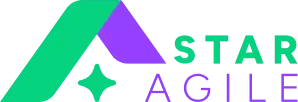I've spent the last five years watching healthcare organisations across the UAE struggle with digital transformation. The common thread? They're trying to run complex, multi-million dirham projects using traditional waterfall methods that simply can't keep pace with today's rapid technological changes. That's where SAFe (Scaled Agile Framework) comes in, and I've seen firsthand how it's revolutionising healthcare delivery from Dubai to Abu Dhabi.
Role of SAFe in Modernising Healthcare Systems in the UAE
1. Understanding the SAFe Framework for Healthcare Organisations
The UAE healthcare scene poses special challenges that conventional project management cannot adequately handle. SAFe offers a systematic way to scale agile best practices within large healthcare organizations, something I've seen take low-performing hospitals and turn them into digital giants. Contrary to straightforward Scrum or Kanban deployments, SAFe has a way of dealing with the sophistication of healthcare systems by creating well-defined roles, ceremonies, and artefacts that suit the hierarchical nature of medical institutions without losing the adaptability necessary for innovation.
With my experience working with many healthcare providers, the framework's focus on continuous delivery and inbuilt quality resonates especially well with medical professionals who are already aware of the necessity for systematic approaches and evidence-based practices. The framework brings concepts such as Agile Release Trains (ARTs) that reflect the multidisciplinary teams already prevalent in healthcare environments, so adoption becomes more intuitive than you would anticipate.
2. Why UAE Healthcare Providers are Adopting SAFe Methodologies
UAE's visionary Vision 2030 has put tremendous pressure on healthcare providers to digitalize at high speed without compromising on world-class service standards. I've seen three drivers driving UAE healthcare organizations towards SAFe:
3. Regulatory Compliance and Innovation Balance:
The Department of Health Abu Dhabi (DoH) and Dubai Health Authority (DHA) keep changing their digital health record, telemedicine functionality, and data security requirements. SAFe's iterative nature enables hospitals to achieve compliance requirements in increments while innovating at the same time. This ensures they can deploy new patient portals or AI-based diagnostic software without holding up for months for flawless compliance documentation, but include compliance in every Program Increment (PI).
4. Multicultural Workforce Integration:
Professionals representing more than 100 nationalities work in the healthcare industry of UAE, bringing with them varied work culture and practices. SAFe brings a common language and structure that cuts across cultural boundaries. In PI Planning sessions I have conducted, I've observed Indian IT personnel, American administrators, and Emirati medical directors coming together seamlessly around common goals, something that seldom occurred using conventional project management practices.
5. Rapid Technology Adoption Pressure:
With patients expecting the same digital experience from hospitals that they get from banking or retail, healthcare providers can't afford 18-month implementation cycles anymore. SAFe's focus on delivering working software every 10-12 weeks means patients see improvements constantly, maintaining satisfaction while the larger transformation continues behind the scenes.
How SAFe Improves Healthcare Project Planning in the UAE
1. Agile Release Train (ART) Implementation in Dubai Hospitals
When I introduced ART ideas for the first time to a large Dubai hospital, everyone was highly skeptical. How would a system developed for software coding apply in a life-or-death situation? The reason is SAFe's flexibility and emphasis on value delivery over process-heavy thinking.
The hospital formed its first ART around its patient experience transformation initiative, bringing together 75 professionals from IT, nursing, administration, and medical departments. Unlike their previous approach, where departments worked in silos, the ART structure forced daily collaboration. The results spoke for themselves - what previously took six months to implement (a simple appointment booking system) was delivered in one PI of 10 weeks.
Leading SAFe training in Dubai has shown me that successful ART implementation requires careful attention to local contexts. Prayer times, Ramadan schedules, and the weekend structure (Friday-Saturday) all need consideration when planning ceremonies. Smart hospitals build these cultural elements into their SAFe calendars from day one, ensuring sustainable adoption rather than forced compliance.
2. PI Planning for Healthcare Digital Initiatives Across the Emirates
PI Planning in UAE healthcare environments is very different from what you may be used to in Silicon Valley. I've run sessions where we had to schedule teams across Dubai, Abu Dhabi, and the Northern Emirates, each of which has a different set of health authorities and regulations. The strength of SAFe's PI Planning is its ability to adapt to such complexities while ensuring alignment.
During a recent PI Planning session for a nationwide telehealth platform, we structured the event to address emirate-specific requirements while maintaining overall solution integrity. Teams in Dubai focused on integrating with DHA's Salama system, while Abu Dhabi teams worked on DoH's Malaffi integration. The shared PI objectives ensured both teams delivered compatible solutions that served patients seamlessly across emirate boundaries.
The face-to-face nature of PI Planning (even when conducted virtually during COVID) breaks down the formal hierarchies common in Middle Eastern healthcare organisations. I've watched junior Emirati developers confidently present impediments to hospital CEOs, something unimaginable in traditional settings but essential for agile success.
SAFe Enhancing Cost Control in Healthcare in the UAE
1. Lean-Agile Budgeting for UAE Healthcare Projects
Traditional healthcare IT budgeting in the UAE often involves annual cycles with little flexibility for emerging needs. I've seen hospitals allocate millions of dirhams to projects that become obsolete before implementation is complete. SAFe's Lean-Agile budgeting transforms this by funding value streams rather than projects.
One Dubai private healthcare chain transitioned from project investment to value stream investment, budgeting to their "Patient Digital Experience" and "Clinical Excellence" value streams. This enabled them to shift instantaneously when COVID-19 struck, diverting money from elective procedure systems into telehealth platforms without red tape. The SAFe participatory budgeting feature also involves frontline healthcare staff in the spending decisions, resulting in more pragmatic investments.
The framework's emphasis on incremental funding based on demonstrated value particularly appeals to the UAE's results-oriented healthcare leadership. Instead of committing 50 million dirhams upfront for a complete hospital information system, organisations can invest incrementally, seeing returns every PI and adjusting course based on actual outcomes rather than projected benefits.
2. ROI Optimisation Through SAFe Portfolio Management
Portfolio management in UAE healthcare faces unique challenges with multiple stakeholders - government health authorities, insurance companies, and patient communities all demanding different outcomes. SAFe's portfolio level provides tools to balance these competing demands while maximising overall value delivery.
I worked with an Abu Dhabi healthcare network that used SAFe's portfolio kanban to manage their digital initiatives. By visualising all initiatives from AI-powered diagnostics to patient mobile apps on a single board, leadership could make informed trade-offs. They discovered that several "critical" projects were actually delivering minimal patient value, allowing reallocation of resources to initiatives with immediate impact.
Leading SAFe training in Dubai emphasises how portfolio metrics must align with the UAE's healthcare KPIs. Patient satisfaction scores, reduced waiting times, and clinical outcome improvements become the primary measures of success, not just technical delivery metrics. This alignment ensures digital investments directly support the country's healthcare transformation goals.
Addressing UAE-Specific Healthcare Challenges with SAFe
1. Meeting Dubai Health Authority (DHA) Regulations Through SAFe
Regulatory compliance in UAE healthcare isn't optional - it's existential. DHA's regulations evolve constantly, from data residency requirements to telemedicine guidelines. Traditional waterfall approaches struggle with this dynamism, often delivering compliant systems that are outdated by go-live.
SAFe's built-in quality practices and continuous compliance approach offer a better way. I've helped hospitals implement "compliance as code" where regulatory requirements become automated tests in their deployment pipelines. Each feature developed includes compliance acceptance criteria from the start, preventing the all-too-common scenario of building great systems that can't be deployed due to regulatory gaps.
The approach of the framework to involve stakeholders early and continuously comes in handy while working with regulatory agencies. Frequent system demos at PI boundaries enable DHA delegates to offer input along the way and not only during final approval stages. Such collaborative practices have cut approval cycles from months to weeks for a number of digital health projects I've witnessed.
2. Integrating SAFe with UAE's National Health Information Systems
The UAE's push for unified health information exchange through platforms like Malaffi and Salama creates integration challenges for every healthcare provider. SAFe's systems thinking approach helps organisations view these integrations not as technical hurdles but as value delivery opportunities.
One interesting application I saw was a hospital organization applying SAFe to integrate Malaffi while upgrading their own internal systems in parallel. By treating integration as a separate value stream with dedicated capacity, they avoided the common pitfall of integration becoming an afterthought. Leading SAFe training in Dubai now includes specific modules on managing government system integrations, recognising this unique regional requirement.
Case Studies of SAFe in Healthcare Digital Projects in the UAE
1. Success Story: Major Abu Dhabi Hospital's Digital Transformation
While I can't name specific institutions, I can share the transformation journey of a major Abu Dhabi hospital that serves over 500,000 patients annually. When they began their SAFe journey in 2021, their IT project success rate was below 30%, with most initiatives running over budget and schedule.
The hospital started with a single ART focused on patient engagement, training 50 team members in SAFe practices. Their first PI delivered a working patient portal with appointment booking, lab results access, and payment integration - features that had been "in development" for two years under their previous approach. The success created organisational pull for SAFe adoption rather than push from leadership.
By their fourth PI, they had expanded to three ARTs covering clinical systems, administrative efficiency, and patient experience. The measurable outcomes included:
60% reduction in patient wait times through optimised scheduling algorithms
40% decrease in IT project costs through elimination of rework and better prioritisation
90% project success rate, with clear value delivery every PI
2. Lessons from Private Healthcare Chains in Dubai
Private healthcare in Dubai operates under intense competition and margin pressure. One multi-facility chain's SAFe adoption journey offers valuable lessons for similar organisations. They began with Leading SAFe training in Dubai for their entire leadership team, ensuring buy-in before rolling out to teams.
Their key innovation was creating a "Clinical Innovation ART" that included practising physicians as full-time team members, not just advisors. This structure ensured clinical relevance in every feature developed. When building their telemedicine platform, having doctors in daily standups meant they caught usability issues immediately, not after deployment.
The chain also pioneered "pop-up ARTs" for specific initiatives like COVID vaccination drives, assembling cross-functional teams quickly using SAFe structures and disbanding them after objective completion. This flexibility allowed rapid response to market changes while maintaining architectural integrity across their digital ecosystem.
Implementation Roadmap: Adopting SAFe in UAE Healthcare Organisations
1. Building Agile Teams in Multicultural UAE Healthcare Settings
The UAE's diversity of the healthcare workforce brings both risk and opportunity to implementing SAFe. Success demands an awareness of and effective exploitation of differences in culture instead of an avoidance of them. From my experience, some cultures are naturally attracted to certain SAFe roles - e.g., hierarchical-culture professionals tend to be excellent Release Train Engineers, while those from more egalitarian backgrounds tend to excel as Scrum Masters.
Creating psychological safety in multicultural teams requires extra attention. I've found that starting retrospectives with appreciation rounds helps team members from high-context cultures feel comfortable sharing improvement ideas. Similarly, using visual management tools transcends language barriers, making information radiators especially powerful in UAE healthcare settings.
2. Change Management Strategies for Emirates Healthcare Providers
Healthcare professionals are trained to be skeptical of change - lives depend on proven procedures. Introducing SAFe requires careful change management that respects this skepticism while demonstrating value. Start with volunteer early adopters, typically younger staff who've experienced agile in previous roles or through Leading SAFe training in Dubai.
The most successful implementations I've seen use a "show, don't tell" approach. Rather than mandating SAFe adoption, they run pilot ARTs that deliver visible wins. When other departments see shorter delivery times and happier teams, they request inclusion. This organic growth ensures sustainable adoption rather than compliance theatre.
Future of SAFe in Healthcare Digitalisation in the UAE
1. Alignment with UAE Vision 2030 Healthcare Goals
The UAE's Vision 2030 aims to position the country among the world's best healthcare systems. SAFe's emphasis on continuous improvement and innovation directly supports these ambitions. As artificial intelligence and genomic medicine become mainstream, healthcare organisations need frameworks that can adapt quickly to technological disruption.
I'm seeing increased interest in combining SAFe with other frameworks like Design Thinking and Lean Startup, creating hybrid approaches tailored to healthcare innovation. The government's push for preventive care and population health management requires the systems thinking that SAFe provides, moving beyond individual patient interactions to community health outcomes.
2. Emerging Trends in Healthcare Technology and SAFe Integration
The convergence of technologies like IoT medical devices, AI diagnostics, and blockchain health records demands coordinated development efforts that SAFe facilitates. Forward-thinking UAE healthcare organisations are already establishing ARTs focused on emerging technologies, preparing for a future where traditional boundaries between healthcare and technology disappear.
Virtual reality surgical training, AI-powered drug discovery, and personalised medicine initiatives all benefit from SAFe's iterative approach. Rather than waiting years for perfect solutions, healthcare providers can deploy incremental improvements that immediately benefit patients while building toward transformative capabilities.
Conclusion
The union of SAFe and digitalisation of healthcare in the UAE is not only a question of process enhancement - it's a matter of radically envisioning how we provide healthcare in the digital world. From my perspective, having helped many organisations along the way, the flexibility of structure that the framework offers makes it ideally placed to meet the UAE's ambitious healthcare ambitions. The achievements I've seen, ranging from decreased patient waits to faster technology uptake, are evidence that SAFe is not merely yet another fad in management but a lasting solution to healthcare innovation. To healthcare executives contemplating embarking on this path, investing in the right SAFe Certification via vendors such as Staragile guarantees your staff have the essential knowledge on which to build their success in this revolution.










